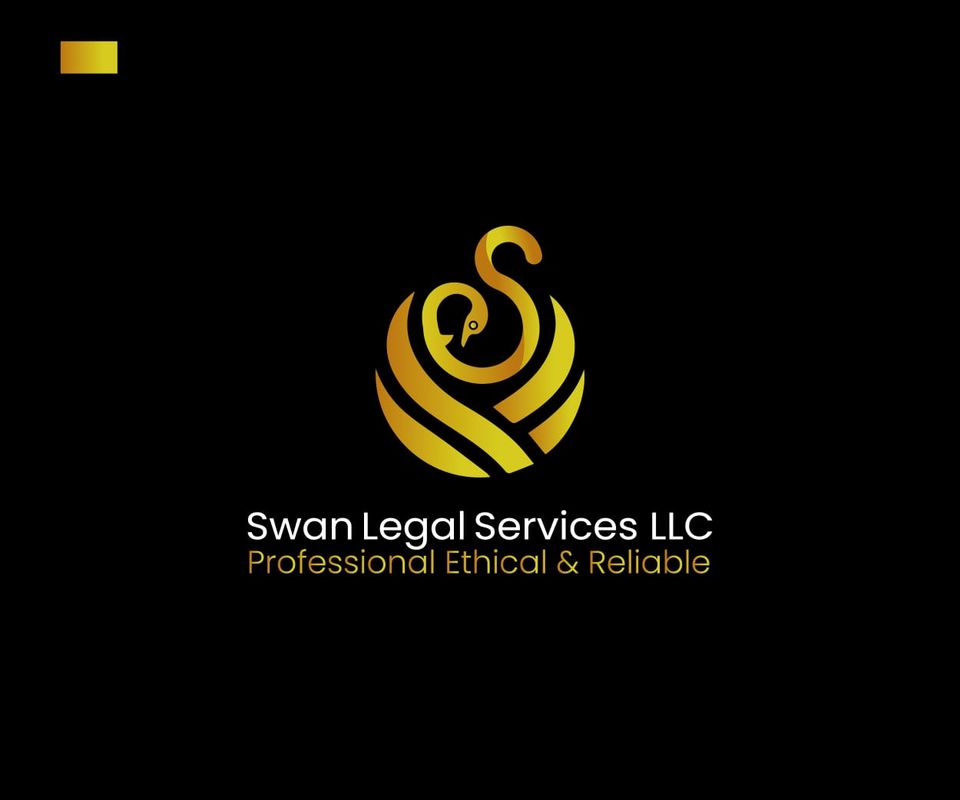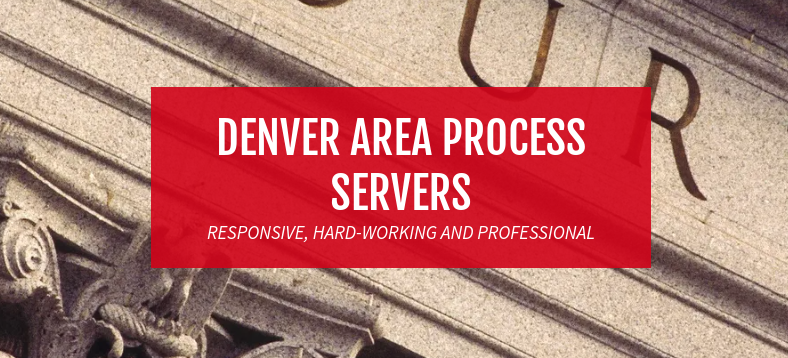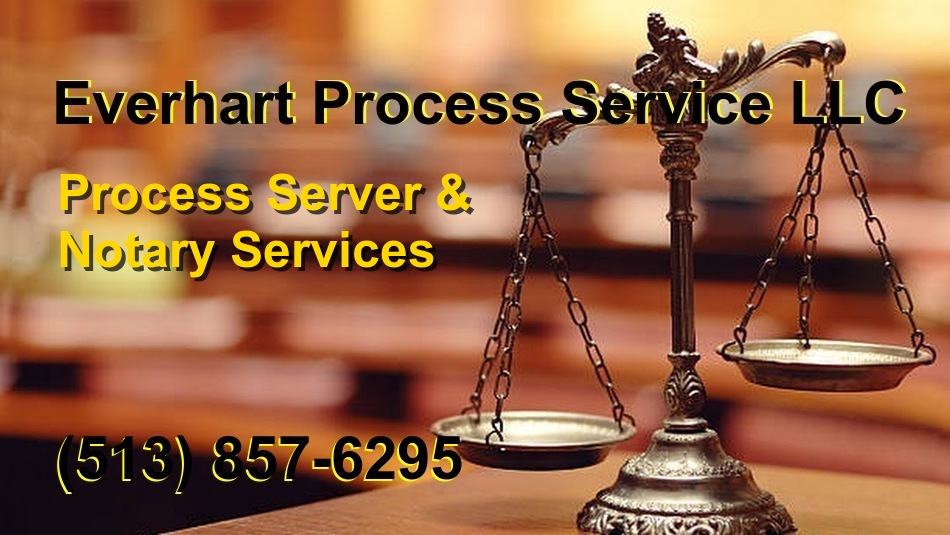 Guide to the Eviction Process in Alaska
Guide to the Eviction Process in Alaska
In Alaska, the eviction process is started by serving the tenant with a “Notice to Quit,” also called a “Notice to Terminate Tenancy.”
This notice must be hand delivered, left on the premises (if nobody is there), or sent via certified mail. The notice must be in writing, state why it is being given, give the date and time when the tenancy will end, give the proper days notice (see below), tell the tenant how they can cure the problem, and tell the tenant that they will be sued for eviction if they do not comply with the notice.
The time limit that you must put in the Alaska Notice to Quit is determined by the reason for the Termination:
- Termination for Non-Payment of Rent: 7 Day Notice
- Termination for causing more than $400.00 in damage: 24 Hours Notice
- Termination for engaging in illegal activities: 5 Day Notice
- Termination for failure to pay utilities: 5 Day Notice
- Termination for other breach of duties: 10 Day Notice
If the tenant does not cure the problem or move out within the notice period, then you must go to court and file a “Forcible Entry and Detainer” lawsuit against the tenant.
Tenants can learn about evictions>Tenants Help Pages
After you file the Forcible Entry and Detainer lawsuit, the tenant will be served and will have 20 days to file an answer. The court will then set 2 hearings. The first one will determine who is entitled to possession of the premises, and the second hearing will determine if you are entitled to any damages.
If the judge determines that you have a right to possession, he will order the tenant to vacate within a certain time period. If after this time period the tenant still has not vacated, then you can apply for a “Writ of Assistance” whereby the police will help you remove the tenant.
How (F.E.D.) Forcible Entry Detainer Cases Work (Sequence of Events)
1 Notice To Quit given to tenant. Before a lawsuit to evict a tenant may be filed, the landlord must give the tenant written notice of the reason the landlord intends to evict the tenant (“terminate the tenancy”). The notice must give the tenant time to correct the problem (or move out) in order to avoid eviction.
2 F.E.D. lawsuit is filed. The landlord files a complaint with the court if the tenant does not fix the problem by the deadline set in the Notice To Quit.
3 Tenant is given notice of the lawsuit. The tenant is served with a copy of the complaint and a court summons. The summons orders the tenant to: a. appear at an eviction hearing, and b. file a written answer to any claim of damages made in the complaint.
4 Eviction Hearing. The court holds an eviction hearing within 15 days after the case is filed in court and at least 2 days after the summons is served on the tenant. At this hearing, the judge decides who gets possession of the property.
5 Judgment on Damages. If the complaint asks for damages, one of the following two things happens after the eviction hearing: a. Damages Trial. This trial will only be held if, within 20 days after the complaint is served on the tenant, the tenant files an answer disagreeing with the claims for money damages made in the complaint. b. Default Judgment. This will happen if the tenant fails to file an answer and the landlord requests a default judgment against the tenant for money.
What is “Forcible Entry and Detainer”?
“Forcible entry and detainer” (F.E.D.) is a type of court case in which a property owner seeks possession of the owner’s real property (like land, a house or an apartment) currently being occupied by another person or persons. Sometimes this type of case is referred to as an “eviction” or “possession” action.
There are two parts to an F.E.D. court case: the eviction phase and the damages phase. The eviction phase (hearing) happens soon after the case is filed. The damages phase is handled at a later date.
1. The Eviction Phase. During this phase, the court will decide whether to grant the landlord’s request to regain possession of the premises. Other issues, such as how much money the tenant owes to the landlord will not be decided at this stage.
2. The Damages Phase. During this phase, the court will decide whether the landlord will get a judgment against the tenant for money. This phase will only be necessary if the landlord’s complaint asks the court for money damages (unpaid rent, damages to the premises, etc.) If the tenant files a counterclaim, it will be decided at this hearing.
Legal Advice
If possible, it is usually a good idea to consult with a lawyer in these matters. For help in finding a lawyer who handles F.E.D. cases, you can find a Law Firm on our Directory.
1. Lawyer Referral Service of the Alaska Bar Association. This service will give you the names of up to three attorneys who handle legal problems like yours. Each attorney has agreed to charge no more than $125 for an initial half-hour consultation. In Anchorage: 272-0352 Outside Anchorage: 800-770-9999 (toll-free within Alaska) Bar Association website: www.alaskabar.org
2. Alaska Legal Services. This agency provides free legal assistance in some civil matters to low income Alaskans. In Anchorage: 272-9431 Outside Anchorage: 888-478-2572 (toll-free within Alaska) ALSC website: www.alsc-law.org Free Legal Resources website: www.alaskalawhelp.org CIV-720 Eviction Booklet (8/15) 4
3. Alaska Native Justice Center. This non-profit organization helps Alaska Natives with legal issues. The Center does not have attorneys, but can refer cases to attorneys if necessary. In Anchorage: 793-3550 Outside Anchorage: Collect calls to the above number will be accepted. Website: www.anjc.org
View the Laws in your State: Alaska Uniform Residential Landlord & Tenant Act AS 34.03.010 – 34.03.360
INFORMATION FOR LANDLORDS: PROCEDURE FOR EVICTING TENANTS
A. Termination of Tenancy
Before filing a court action to evict a tenant, the landlord must give notice to the tenant. This notice is usually called a “Notice of Termination of Tenancy” or “Notice to Quit.” The notice must explain what, if anything, the tenant can do to correct the problem and remain as a tenant. It must also include the deadline (both date and time) for correcting the problem. See AS 09.45.100 -.105.
When the eviction is for failure to pay rent, the landlord may use the court form CIV-725 Notice to Quit. Sample notice forms for eviction for other reasons (for example, intentional damage to the dwelling, illegal use of the premises, violation of the lease agreement, or non-payment of utilities) can be found in the Landlord Tenant Booklet described on page 4. (See AS 09.45.090(a)(2), AS 09.45.105 and AS 34.03.220 for information about the different deadlines and the required contents of these notices.)
B. Service of the “Notice to Quit” AS 09.45.100
(c) explains how the Notice to Quit must be given to the tenant: A notice to quit shall be in writing and shall be served upon the tenant or person in possession by being
(1) Delivered to the tenant or person;
(2) Left at the premises in case of absence from the premises; or
(3) Sent by registered or certified mail. The notice is typically delivered in person to the tenant by the landlord or property manager. If the landlord or property manager attempts to make personal service and the tenant is absent, the notice may be left on the premises. This is commonly done by taping the notice to the tenant’s front door. Whoever delivers or posts the notice should be available to testify at the eviction hearing. Service by mail is seldom used because the tenant may not pick up the mail or the landlord may not receive the return receipt prior to the hearing.
C. Proof of Service of “Notice to Quit”
The landlord must prove to the court that the Notice to Quit was delivered as the statute requires. It is recommended that a record be made at the time of service describing how, when, and by whom the tenant was served. The court form Notice to Quit (CIV-725) provides space at the bottom for this record of service.
D. Providing Tenant with Time to Correct the Problem or Move
If the problem can be corrected, the tenant must be given time to correct it or move out before the landlord may file the court case. If the eviction is for nonpayment of rent, the tenant must be given seven days to pay the rent after receiving the Notice to Quit. If the eviction is for another reason, the amount of time will be different. See AS 09.45.090.
Note: If the notice is sent to the tenant by registered or certified mail, the tenant has three additional days to correct the problem. AS 09.45.090(c). Therefore, if the eviction is for failure to pay rent and the notice is mailed, the notice must give the tenant ten days instead of seven to pay the rent.
E. When Can a Lawsuit Be Filed
If the tenant does not correct the problem or move out within the statutory time period stated in the Notice to Quit, a lawsuit can be filed. AS 09.45.110. For example, if the Notice to Quit is for failure to pay rent and the tenant does not move out or pay the rent within seven days, the lawsuit can be filed on the eighth day. (Note: The first day is the day after you hand the notice to the tenant, and you should include Saturdays, Sundays and holidays when you count the seven days. Civil Rule 6).
F. Who Can Be Named as Plaintiff and Who Can Sign the Complaint
1. Who Can Be Named as Plaintiff.
The plaintiff in an F.E.D. action is the party seeking to evict the tenant. The plaintiff can be the owner of the property or a person authorized by the owner to file an F.E.D. action (for example, a property manager or a person acting under a “power of attorney”)
2. Who Can Sign the Complaint.
If the plaintiff is the person who owns the property, then he or she can sign the complaint and appear in court on his or her own behalf at any hearings. If the plaintiff is a corporation, a property manager, or a person acting on behalf of the owner under a “power of attorney,” then an attorney must sign the complaint, because these persons or entities must always be represented in court by an attorney. The only exception is a non-profit public housing corporation proceeding under AS 09.45.158, which may appear without an attorney.
G. Where to File
The lawsuit to get possession of the property must be filed in the judicial district in which the property is located. Civil Rule 3. A map of the judicial districts is in Appendix 2 on page 31. If the value of the past due rent and damage to the property is $100,000 or less, you must file your case in the district court. AS 22.15.030(a)(6) and (b). If it is greater than $100,000, you must file your case in superior court.
H. How to File
1. Get the following Legal Forms for an Alaska Eviction:
a. Complaint for Forcible Entry and Detainer (CIV-730)
b. Summons – Forcible Entry and Detainer (CIV-105)
c. Case Description (CIV-125 4 )
d. Service Instructions (CIV-615)
e. Judgment for Possession (CIV-300)
f. Writ of Assistance (CIV-575)
Filing the forms and scheduling the eviction hearing.
File the completed forms at your local court and pay the court filing fee. The filing fee is $125 if the amount of money claimed in the complaint is $100,000 or less. The filing fee is $200 if the amount claimed is more CIV-720 Eviction Booklet (8/15) 9 than $100,000.5 You may also need to pay the process server’s fee at this time. See Section I below on serving the defendant.
The court clerk will schedule a hearing on the eviction phase of the case when the complaint is filed with the court. Civil Rule 85 requires the hearing to be held at least two days after the summons and complaint are served on the defendant and not more than 15 days after the case is filed in court. The clerk will ask you how soon you think the summons and complaint will be served on the tenant because the hearing cannot be held until two days after the tenant is served.
Note: If the summons and complaint are not served at least two days before the hearing, the judge will probably postpone the hearing. Please see section I.6 on page 10 for more information.
I. Serving the Defendant
Have the summons and complaint served on each of the named defendants by a process server or peace officer. (See Civil Rule 4.)
1. Choose a process server. The clerk’s office has a list of process servers in your area. You can also find a list of licensed process servers on the Alaska State Trooper website: www.dps.state.ak.us/Statewide/PermitsLicensing. Click on “Civilian Process Server List.” Many parts of the state do not have process servers. In those areas, the summons and complaint must be served by a peace officer (usually by a State Trooper). Check with the clerk’s office about local practices.
2. Contact the process server to make arrangements for service of the summons and complaint. Service fees are set by the individual process server and must be paid directly to the process server. Note: Administrative Rule 11 governs the maximum amount you may recover as “costs” for this service from the tenant. The current amount recoverable is $45.00 for each person on whom service is made plus a minimum of $20.00 for the first 25 miles or portion thereof traveled by the process server. Additional amounts may be recovered for extra mileage or extra time spent serving the documents.
3. Fill out service instructions. You can use either the court’s form (CIV- 615) or the form provided by the process server you select. Fill out the service instructions as completely as possible. In the section in which you must list the documents to be served, write “F.E.D. summons and complaint.” Provide as much information as possible about how to locate each defendant.
4. Deliver completed documents to process server and pay the service fee. The procedures for getting the service instructions and other documents to the process server vary from court to court. Please check with the local clerk’s office or your process server for additional information.
5. Proof of service. After the process server gives the documents to the defendant(s), the process server must prepare a notarized document called a “Return of Service.” A separate Return of Service must be prepared for each named defendant served with a summons and complaint. The Return of Service will prove to the court that the defendant knows about the eviction hearing and lawsuit. The process server must file all Returns of Service with the court and give copies to you before the eviction hearing. You should bring your copies of the Returns of Service to the eviction hearing.
6. Failure to serve documents. If the process server does not serve the summons and complaint at least two days before the eviction hearing, the hearing will probably be postponed. Civil Rule 85(a)(2) and AS 09.45.120. If this happens, you will need to contact the clerk’s office for a new hearing date and a new summons.
J. Defendant’s Response
The defendant must file an answer within 20 days after being served with the complaint.
1. Defendant Files Answer. If the defendant files an answer, there will need to be a trial to resolve the damages claims. For information about how to request a trial, see Chapter V on page 21. If no trial is set, the court will dismiss your case after 180 days for lack of prosecution. Civil Rule 85(a)(6).
2. Defendant’s Answer Includes a Counterclaim. If the defendant’s answer includes a counterclaim, you must respond to the counterclaim within 20 days after the answer is served on you. See Civil Rule 12(a). The defendant’s counterclaim will be decided at the same trial as your claim for damages. If you do not answer the counterclaim, the defendant can get a default judgment against you.
3. Defendant Does Not File an Answer. If the defendant does not file a written answer within the 20-day time limit, you can ask the court for a default judgment against the defendant. You must serve your application on the defendant.
NOTE: If (i) you do not file an application for default judgment, and (ii) the case has been pending for more than 180 days from the date the complaint was filed, and (iii) no further trial or hearing is scheduled to take place in the case, then the court may dismiss the case for want of prosecution without further notice or order. If this happens, a party has the right to reopen this case no later than one year after dismissal by making a request to the court clerk in writing.
RENTAL AGREEMENTS
Sec. 34.03.020. Terms and conditions of rental agreement.
- The landlord and tenant may include in a rental agreement clauses and conditions not prohibited by this chapter or by law, including rent, terms of agreement, and other provisions governing the rights and obligations of the parties.
- In the absence of agreement, the tenant shall pay as rent the fair rental value for the use and occupancy of the dwelling unit.
- Rent shall be payable without demand or notice at the time and place agreed upon by the parties. Unless otherwise agreed, rent is payable at the dwelling unit. Unless otherwise agreed, rent is payable at the beginning of any term of one month or less and otherwise in equal monthly installments. Unless otherwise agreed, rent shall be uniformly apportionable from day to day and shall be paid on the date the periodic tenancy begins and payable on or before the same date of each and every month thereafter until the tenancy terminates.
- Unless the rental agreement fixes a definite term, the tenancy shall be week to week in the case of a tenant who pays weekly rent, and in all other cases month to month.
- If required by the landlord, the landlord and the tenant shall include within the rental agreement, incorporate by reference in the rental agreement, or add as a separate attachment to the rental agreement a premises condition statement, setting out the condition of the premises, including fixtures but excluding reference to any of the other contents of the premises, and, if applicable, a contents inventory itemizing or describing all of the furnishings and other contents of the premises and specifying the condition of each of them. In the premises condition statement and contents inventory, the landlord and tenant shall describe the premises and its contents at the commencement of the term of the period of the occupancy covered by the rental agreement. When signed by the landlord and tenant, the premises condition statement and contents inventory completed under this subsection become part of the rental agreement.
Sec. 34.03.030. Effect of unsigned or undelivered rental agreement.
- If the landlord does not sign and deliver a written rental agreement signed and delivered to the landlord by the tenant, acceptance of rent without reservation by the landlord gives the rental agreement the same effect as if it had been signed and delivered by the landlord.
- If the tenant does not sign and deliver a written rental agreement signed and delivered to the tenant by the landlord, acceptance of possession and payment of rent without reservation gives the rental agreement the same effect as if it had been signed and delivered by the tenant.
- If a rental agreement given effect by the operation of this section provides for a term longer than one year, it is effective only for one year.
Sec. 34.03.040. Prohibited provisions in rental agreements.
- A rental agreement may not provide that the tenant or landlord
- agrees to waive or to forego rights or remedies under this chapter;
- authorizes a person to confess judgment on a claim arising out of the rental agreement;
- agrees to the exculpation or limitation of any liability of the landlord or tenant arising under the law or to indemnify the landlord or tenant for that liability or the costs connected with it;
- agrees to pay the landlord’s attorney fees.
- A provision prohibited by (a) or (c) of this section included in a rental agreement is unenforceable. If a landlord or tenant wilfully uses a rental agreement containing provisions known by the person to be prohibited, the other party may recover the amount of actual damages.
- A rental agreement between a mobile home park operator and a mobile home park tenant may not
- deny a tenant of a mobile home park the right to sell the tenant’s mobile home within the park or require the resident or tenant to remove the mobile home from the park solely on the basis of the sale of the mobile home, nor may the mobile home park operator make a rule or regulation to the same effect, except that, within 30 days of written notice by the tenant of intent to sell the mobile home to a specified buyer, the operator or owner of the mobile home park may refuse to allow a sale for the following reasons:
- the mobile home is in violation of laws or ordinances relating to health, safety or welfare;
- the proposed buyer refuses to assume the same terms as are in the existing rental agreement; or
- the proposed buyer does not have sufficient financial responsibility;
- require a tenant to provide permanent improvements that become a part of the real property of the mobile home park owner or operator as a condition of tenancy in the mobile home park; however, the rental agreement may require the tenant to maintain existing conditions in the park;
- require payment of any type of vendor or transfer fee either by a tenant in the mobile home park desiring to sell the tenant’s mobile home to another party or by any party desiring to purchase a mobile home from a tenant in the park as a condition of tenancy; however, this paragraph does not prevent the owner or operator from applying normal park standards to prospective tenants before granting or denying tenancy or from charging a reasonable vendor or transfer fee for services actually performed if the tenant is notified in writing of the amount of those charges before agreeing to move into the park; or
- require the prospective tenant to pay a fee to enter the mobile home park or a tenant to pay a fee to transfer the tenant’s mobile home to another location outside the park; however, this paragraph does not prevent the owner or operator from charging a reasonable fee for services actually performed and if the tenant is notified in writing of the amount of those charges before agreeing to move into the park.
- deny a tenant of a mobile home park the right to sell the tenant’s mobile home within the park or require the resident or tenant to remove the mobile home from the park solely on the basis of the sale of the mobile home, nor may the mobile home park operator make a rule or regulation to the same effect, except that, within 30 days of written notice by the tenant of intent to sell the mobile home to a specified buyer, the operator or owner of the mobile home park may refuse to allow a sale for the following reasons:
Sec. 34.03.050. Separation of rents and obligations to maintain property forbidden.
A rental agreement, assignment, conveyance, trust deed, or security instrument may not permit the receipt of rent free of the obligation to comply with AS 34.03.100(a).
Sec. 34.03.060. Sublease and assignment.
- Unless otherwise agreed in writing, the tenant may not sublet the premises or assign the rental agreement to another without the landlord’s consent.
- The tenant’s right to sublease the premises or assign the rental agreement to another shall be conditioned on obtaining the landlord’s consent, which may be withheld only upon the grounds specified in (d) of this section; no further restrictions on sublease or assignment are enforceable.
- When the rental agreement requires the landlord’s consent for sublease or assignment, the tenant may secure one or more persons who are willing to occupy the premises. Each prospective occupant shall make a written offer signed and delivered by the prospective occupant to the landlord, containing the following information on the prospective occupant:
- name, age, and present address;
- marital status;
- occupation, place of employment, and name and address of employer;
- number of all other persons who would normally reside with the prospective occupant;
- two credit references, or responsible persons who will confirm the financial responsibility of the prospective occupant; and
- names and addresses of all landlords of the prospective occupant during the prior three years.
- Within 14 days after the written offer has been delivered to the landlord, the landlord may refuse consent to a sublease or assignment by a written rejection signed and delivered by the landlord to the tenant, containing one or more of the following reasonable grounds for rejecting the prospective occupant:
- insufficient credit standing or financial responsibility;
- number of persons in the household;
- number of persons under 18 years of age in the household;
- unwillingness of the prospective occupant to assume the same terms as are included in the existing rental agreement;
- proposed maintenance of pets;
- proposed commercial activity; or
- written information signed by a previous landlord, which shall accompany the rejection, setting out abuses of other premises occupied by the prospective occupant.
- In the event the written rejection fails to contain one or more grounds permitted by (d) of this section for rejecting the prospective occupant, the tenant may consider the landlord’s consent given, or at the tenant’s option may terminate the rental agreement by a written notice given without unnecessary delay to the landlord at least 30 days before the termination date specified in the notice.
- If the landlord does not deliver a written rejection signed by the landlord to the tenant within 14 days after a written offer has been delivered to the landlord by the tenant, the landlord’s consent to the sublease or assignment shall be conclusively presumed.
LANDLORD OBLIGATIONS
Sec. 34.03.070. Security deposits and prepaid rent.
- Except as provided in (h) of this section, a landlord may not demand or receive prepaid rent or a security deposit, however denominated, in an amount or value in excess of two months’ periodic rent. This section does not apply to rental units where the rent exceeds $2,000 a month.
- Upon termination of the tenancy, property or money held by the landlord as prepaid rent or as a security deposit may be applied to the payment of accrued rent and the amount of damages that the landlord has suffered by reason of the tenant’s noncompliance with AS 34.03.120. The accrued rent and damages must be itemized by the landlord in a written notice mailed to the tenant’s last known address within the time limit prescribed by (g) of this section, together with the amount due the tenant. In this subsection, “damages”
- means deterioration of the premises and, if applicable, of the contents of the premises;
- does not include deterioration
- that is the result of normal wear and tear;
- caused by the landlord’s failure to prepare for expected conditions or by the landlord’s failure to comply with an obligation of the landlord imposed by this chapter.
- All money paid to the landlord by the tenant as prepaid rent or as a security deposit in a lease or rental agreement shall be promptly deposited by the landlord, wherever practicable, in a trust account in a bank, savings and loan association, or licensed escrow agent, and the landlord shall provide to the tenant the terms and conditions under which the prepaid rent or security deposit or portions of them may be withheld by the landlord. Nothing in this chapter prohibits the landlord from commingling prepaid rents and security deposits in a single financial account; however, the landlord shall separately account for prepaid rent and security deposits received from each tenant. The landlord may not commingle prepaid rent and security deposits with other funds. The landlord may not use money held for one tenant in a trust account to
- refund the security deposit of another tenant;
- apply to the payment of another tenant’s accrued rent;
- apply to damages suffered by the landlord because of another tenant’s noncompliance with AS 34.03.120.
- If the landlord wilfully fails to comply with (b) of this section, the tenant may recover an amount not to exceed twice the actual amount withheld.
- This section does not preclude a landlord or tenant from recovering other damages to which either may be entitled under this chapter.
- The holder of the landlord’s interest in the premises at the time of the termination of the tenancy is bound by this section.
- If the landlord or tenant gives notice that complies with AS 34.03.290, the landlord shall mail the written notice and refund required by (b) of this section within 14 days after the tenancy is terminated and possession is delivered by the tenant, except the landlord shall have 30 days after the tenancy is terminated to mail the refund if costs are deducted for damages that the landlord has suffered because of the tenant’s noncompliance with AS 34.03.120. If the tenant does not give notice that complies with AS 34.03.290, the landlord shall mail the written notice and refund required by (b) of this section within 30 days after the tenancy is terminated, possession is delivered by the tenant, or the landlord becomes aware that the dwelling unit is abandoned. If the landlord does not know the mailing address of the tenant, but knows or has reason to know how to contact the tenant to give the notice required by (b) of this section, the landlord shall make a reasonable effort to deliver the notice and refund to the tenant.
- Notwithstanding the limitation on the amount of prepaid rent or security deposit in (a) of this section, a landlord may demand or receive an additional security deposit from a tenant who has a pet on the premises that is not a service animal. The additional security deposit
- may not exceed the periodic rent for one month; and
- shall be accounted for separately from prepaid rent or a security deposit received under (a) of this section and may be applied only to the amount of damages that are directly related to the pet of the tenant.
- (i) In this section,
- “normal wear and tear& means deterioration that occurs from the intended use of the rental unit and without negligence, carelessness, accident, misuse, or abuse of the premises or contents by the tenant, members of the household of the tenant, or the invitees or guests of the tenant;
- “service animal” means an animal that is individually trained to do work or perform tasks that are directly related to and for the benefit of an individual with a disability, including a physical, sensory, psychiatric, intellectual, or other mental disability.
Sec. 34.03.080. Disclosure.
- The landlord or a person authorized to enter into a rental agreement on behalf of the landlord shall disclose to the tenant in writing at or before the commencement of the tenancy the name and address of
- the person authorized to manage the premises; and
- an owner of the premises or a person authorized to act for and on behalf of the owner for the purpose of service of process and for the purpose of receiving and receipting for notices and demands.
- The information required to be furnished by this section shall be kept current and this section extends to and is enforceable against any successor landlord, owner, or manager.
- A person who fails to comply with (a) of this section becomes an agent of each person who is a landlord for the purpose of
- service of process and receiving and receipting for notices and demands; and
- performing the obligations of the landlord under this chapter and under the rental agreement and expending or making available for the purpose all rent collected from the premises.
- A mobile home park operator shall disclose fully in writing all capital improvements that will be required to be made by the tenant including but not limited to skirting or utility hook-ups, before entering into a rental agreement.
Sec. 34.03.090. Landlord to supply possession of the dwelling unit.
- At the commencement of the term the landlord shall deliver possession of the premises to the tenant in compliance with the rental agreement and AS 34.03.100. The landlord may, after serving a notice to quit under AS 09.45.100 – 09.45.105 to a person who is wrongfully in possession,
- bring an action for possession against any person wrongfully in possession; and
- recover the damages provided in AS 34.03.290.
- The tenant shall acknowledge or verify by the tenant’s signature the accuracy of the premises condition statement and contents inventory prepared under AS 34.03.020(e). The premises condition statement and contents inventory
- may be used by the landlord as the basis
- to determine whether prepaid rent or a security deposit shall be applied to the payment of damages to the premises when authorized by AS 34.03.070(b); and
- to compute the recovery of other damages to which the parties may be entitled under this chapter; and
- is, in an action initiated by a party to recover damages or to obtain other relief to which a party may be entitled under this chapter, presumptive evidence of the condition of the premises and its contents at the commencement of the term of the period of occupancy covered by the rental agreement.
- may be used by the landlord as the basis
Sec. 34.03.100. Landlord to maintain fit premises.
- The landlord shall
- make all repairs and do whatever is necessary to put and keep the premises in a fit and habitable condition;
- keep all common areas of the premises in a clean and safe condition;
- maintain in good and safe working order and condition all electrical, plumbing, sanitary, heating, ventilating, air-conditioning, kitchen, and other facilities and appliances, including elevators, supplied or required to be supplied by the landlord;
- provide and maintain appropriate receptacles and conveniences for the removal of ashes, garbage, rubbish, and other waste incidental to the occupancy of the dwelling unit and arrange for their removal;
- supply running water and reasonable amounts of hot water and heat at all times, insofar as energy conditions permit, except where
- the building that includes the dwelling unit is so constructed that heat or hot water is generated by an installation within the exclusive control of the tenant and supplied by a direct public utility connection; or
- The premises do not have a well or water provided by a direct public utility connection and the rental agreement specifically states that the duty of the landlord to supply running water or hot water to the premises is waived by the tenant;
- if requested by the tenant, provide and maintain locks and furnish keys reasonably adequate to ensure safety to the tenant’s person and property; and
- provide smoke detection devices and carbon monoxide detection devices as required under AS 18.70.095.
Sec. 34.03.110. Limitation of liability.
- Unless otherwise agreed, a landlord who conveys premises that include a dwelling unit subject to a rental agreement in a good faith sale to a bona fide purchaser is relieved of liability under the rental agreement and this chapter as to events occurring subsequent to written notice to the tenant of the conveyance. However,
- the landlord remains liable to the tenant for the property and money to which the tenant is entitled under AS 34.03.070, unless the property and money are specifically assigned to and accepted by the purchaser; and
- the provisions of
- a premises condition statement prepared under AS 34.03.020(e) between the landlord and the tenant remains valid as between the purchaser and the tenant until a new premises condition statement is entered into between the purchaser and the tenant; and
- a contents inventory prepared under AS 34.03.020(e) between the landlord and the tenant remains valid as between the purchaser and the tenant for the contents remaining on the premises after the conveyance of the premises until a new contents inventory is entered into between the purchaser and the tenant.
- Unless otherwise agreed, a manager of premises that include a dwelling unit is relieved of liability under the rental agreement and this chapter as to events occurring after written notice to the tenant of the termination of the person’s management.
For names of lawyers in your area who are experienced in housing issues
Find Law Firms on our Directory.
Find The Eviction Process in other States
Nationalevictions.com is for people who are renting or seeking to rent housing. Our site is for Eviction Information Purposes only, Not Intended to replace your Attorney or any Legal Advice. The reader should always remember your legal responsibilities. After all, you may unknowingly jeopardize your rights by not fulfilling your legal rights as a Tenant or Landlord.
Many of the Chapters and Articles are interrelated. This not intended to be an all-inclusive overview, or the best advice in every situation. Please Consult a Lawyer for your Rights and Protection as to the laws of your State. This information is not meant to be a substitute for the advice of an Attorney.











